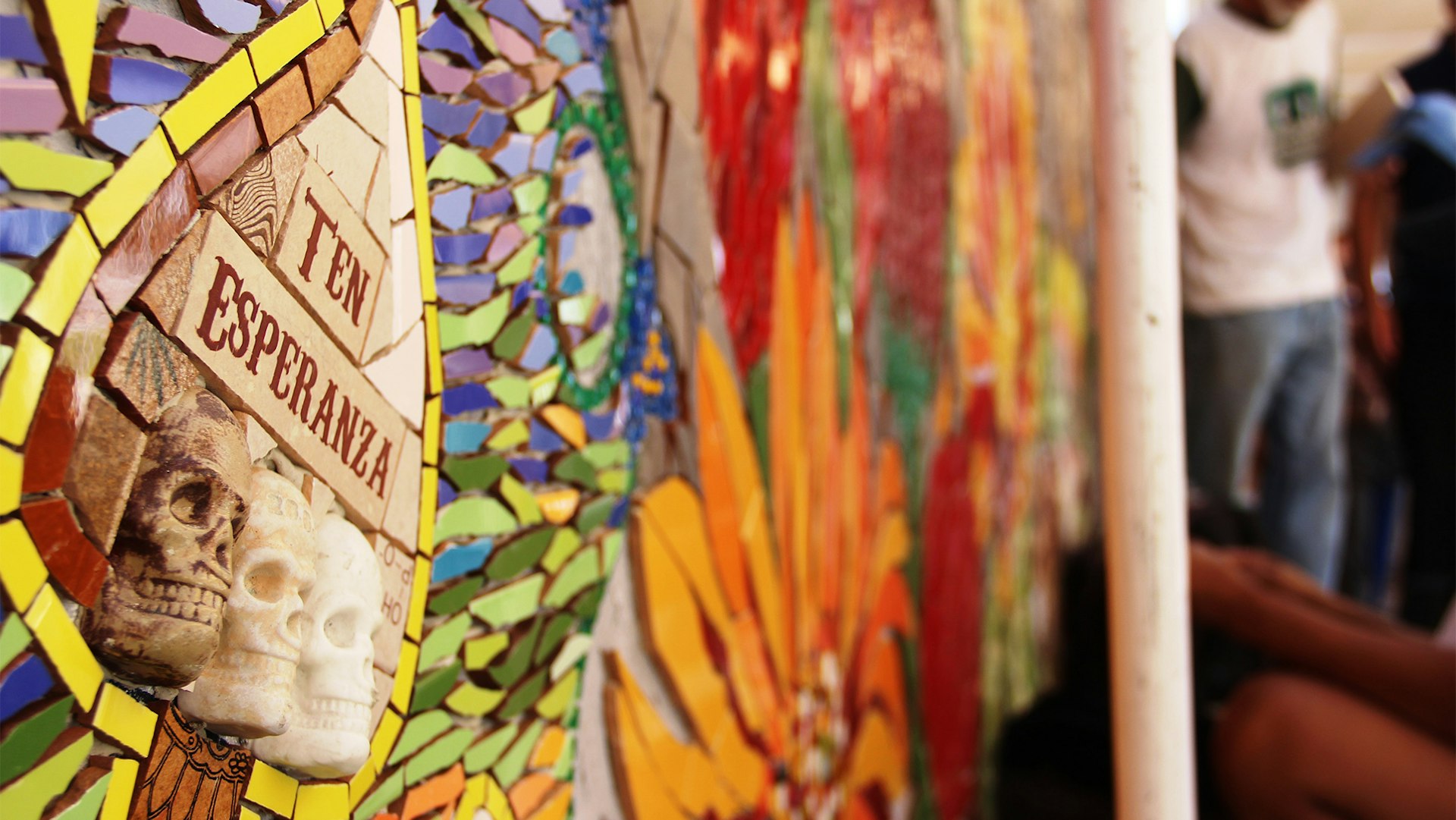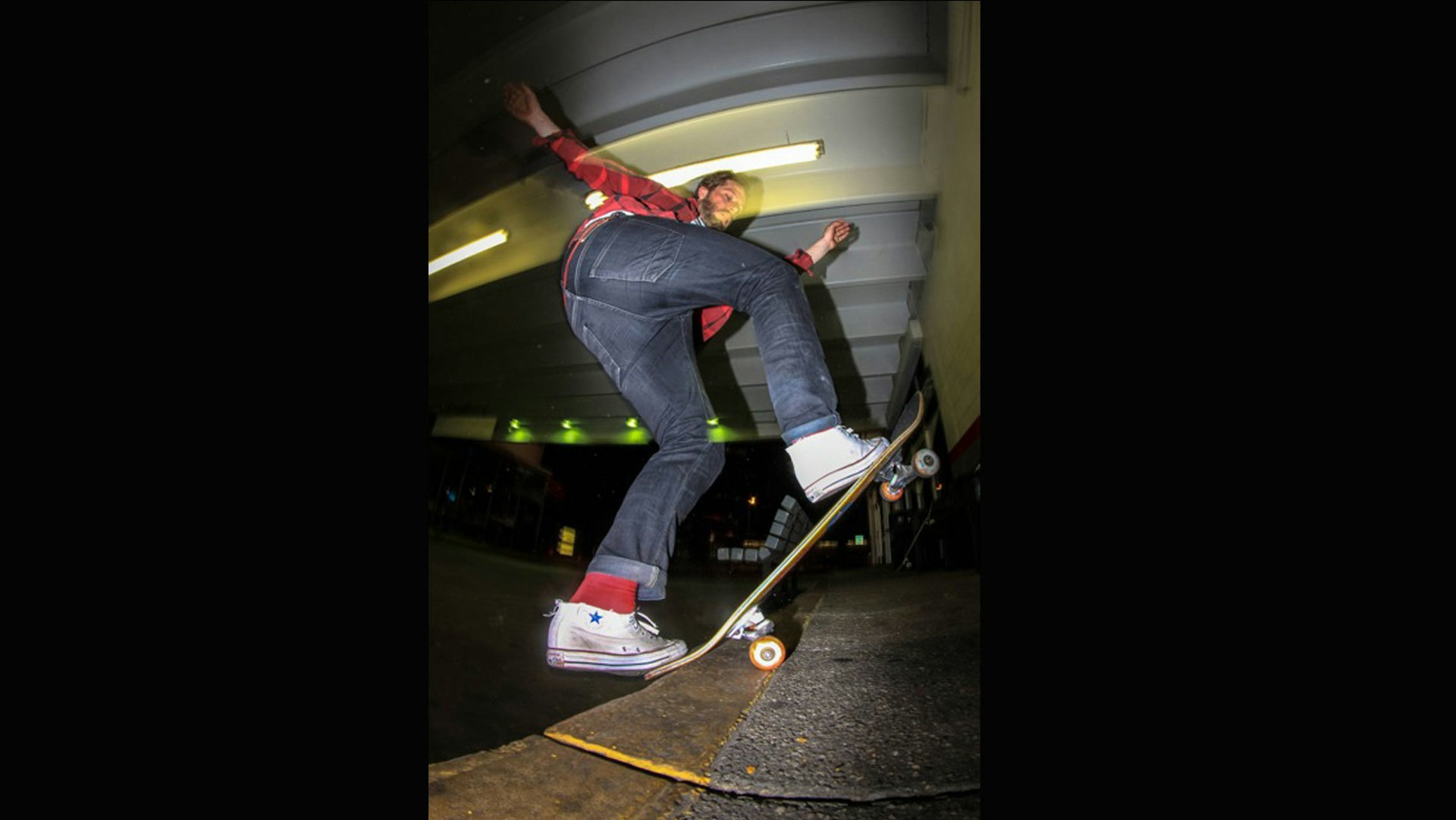
Santiago Mosaics
- Text by George Kafka
- Photography by George Kafka
Gather your tiles and cement; the revolution will be ceramicised! At least,that’s if 80 of the globe’s foremost mosaic artists have their way. Last month this unique group descended on Puente Alto, a municipality on the outskirts of Santiago, for the First International Mosaic Intervention. What ensued was at once a conference on mosaics and community artwork, a friends-reunited meeting and a two week party. But the legacy of the event will be a remarkable 200m/s piece that now glistens proudly from the town hall.
Huck went down to see why mosaics are as powerful as any street art out there and ask why we aren’t covering all of our town halls with them.
This Is What Art Looks Like
Forget the stereotypes of bathroom tiles or kitsch patterns, mosaicists are highly skilled and incredibly creative members of the artistic community who have suffered from a severe lack of respect in the art world’s higher circles. Notably, the director of the Tate, Nicholas Serota, who has refused to display any mosaic work at his galleries due to its associations with craft, as opposed to fine art. He’s clearly never seen the work of Carrie Reichardt, with its formidable combination of technical skill and political drive. Or the Mosaizm collective whose complex sculptural works will leave you reconsidering the possibilities of mosaics.
Proud to Rep’ Different Roots
Carrie Reichardt sees mosaics and other craft techniques as part of a wider shift in artistic consciousness, away from the over-commercialisation of art and towards a more politically, environmentally and socially conscious movement. “I think tile allows you to be much more subversive. Even in the UK, you wouldn’t be allowed to include a lot of this stuff, but because it appears subtly on the tile they won’t notice unless people bother to look closely. But if people do look closely, nine times out of ten they aren’t going to be offended because they’ve already been seduced by the material. As people look at sustainability more and more, craft is really essential because it involves labour, time and appreciation of materials. Most of the work I do at home is with found and recycled tiles, which comes back to an appreciation of the materials.”
Transforming Communities, Tile by Tile
Stepping out of the subway in Puente Alto is a truly breath-taking experience, as kilometres of detailed scenes from Chilean life stretch out before you from the team’s previous project last year. Organiser Isidora Lopez explained that the impact of the work goes deeper than the purely aesthetic. “What we had with the first project was essentially a school on the street. Many of the volunteers had no experience in mosaics, but thanks to the the variety of experience we had, those with less experience were able to learn.” The influence of the project went beyond the team as well, “At the end of each section, members of the community would come down and pick up the leftover pieces of tile to take home for their own mosaic projects.” Ariel Cadiz, another member of the original team, added that his work with disadvantaged members of society had revealed a truly therapeutic side to working with mosaics. This sentiment was echoed again and again by the international artists working on the town hall, who have seen the socially beneficial effects of community work from Sao Paolo to Southwark.
Censorship, Dialogue and Expression
Faced with threats of censorship from the municipality of Puente Alto, Isidora and other artists engaged in important debates with the mayor – a young, relatively progressive member of Chile’s major right wing party – about the importance of the freedom of expression for the artists involved. A skull, a bottle of wine and an Indian goddess were images that all raised voices of concern from the mayor’s office, in a nation where multiculturalism is limited and strict Catholic beliefs maintain a strong influence. The mayor’s eventual public support for the project represents an opportunity for cultural education and the opening of dialogues in the community – Isidora argues, “even if somebody does come and find something they object to, we have to allow for different opinions…it’s positive!”
Sharing Skills
The coming together of 60 artists from different backgrounds and experiences to work together on a single wall created an open environment where artists were learning from each other’s techniques while sharing tiles and wall space. Particular attention was given to the work of the artists from Puente Alto whose combination of speed, scale and quality is now influencing mosaics on a global scale.
Public Space to Represent the People
Many of the artists involved come from a background in community artworks, where the long term effects of such works are substantial for the communal spaces which they occupy. Laurel True who founded the Global Mosaics Project described her experiences in Haiti where public artworks have led to a rise in tourism in areas which suffered dramatically following the earthquake in 2010. Public artworks such as mosaics can have the effect of transforming non-places – railway bridges, industrial parks etc. – into attractions and sources of local pride. Public artworks allow engagement with public space in a non-commercial way which can be essential to inclusive and engaged communities. The use of the municipal building is perhaps a perfect way to symbolise this social importance. For Carrie Reichardt, “The town hall is supposed to represent the people, and now it does.”
To see more from the event check out their Facebook page.
